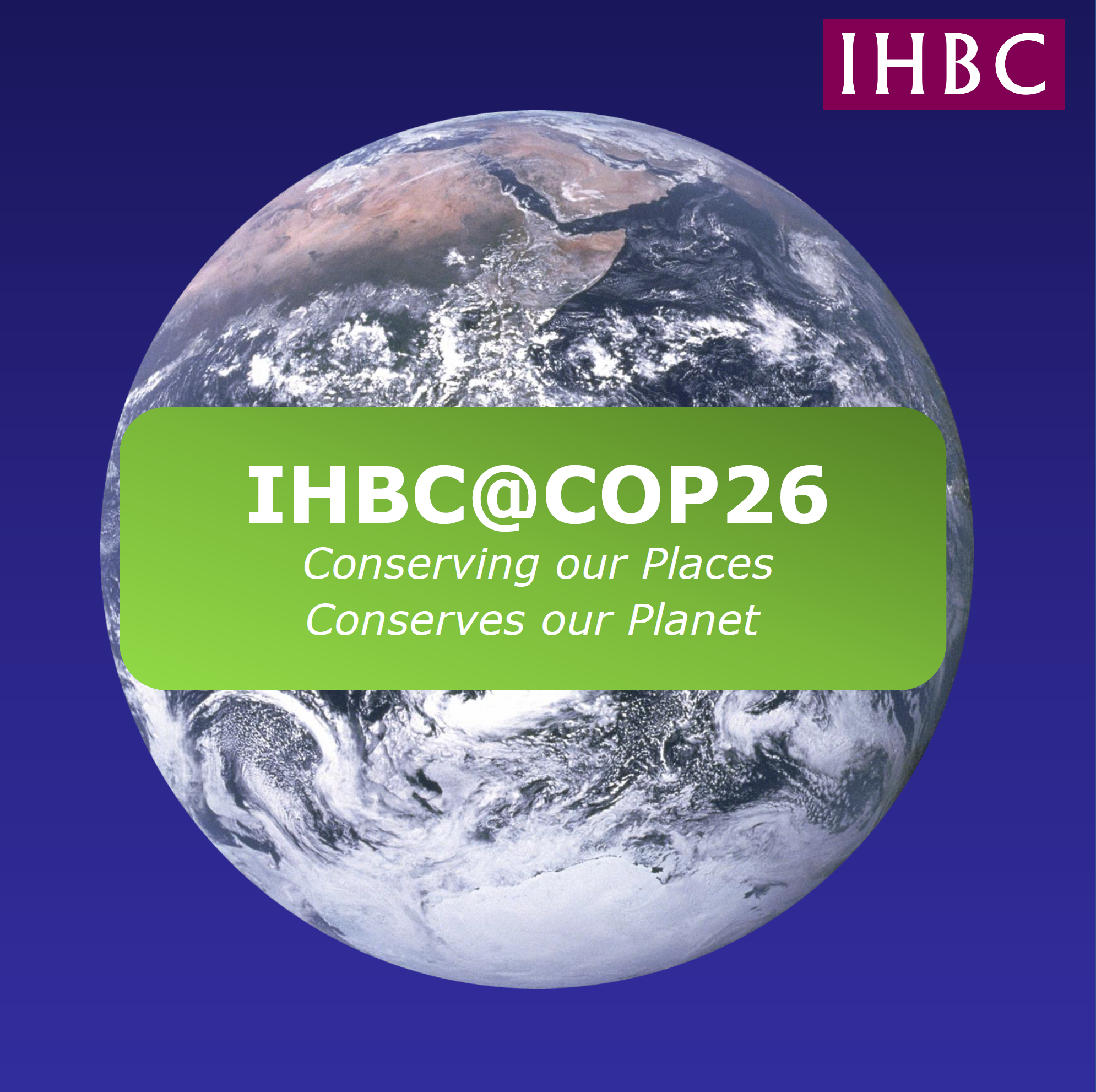 Following discussions around the IHBC@COP26, the Helpdesk+ has highlighted some options in policy and practice standards that might help us do more about ‘Conserving our Planet’ by ‘Conserving our Places’ with ‘Some observations on moving forward after COP26’.
Following discussions around the IHBC@COP26, the Helpdesk+ has highlighted some options in policy and practice standards that might help us do more about ‘Conserving our Planet’ by ‘Conserving our Places’ with ‘Some observations on moving forward after COP26’.
… yet another positive contribution led by the IHBC to advocate on behalf of a more sustainable future…
IHBC Chair David McDonald said: ‘I’m delighted to welcome the publication of these new observations on options to move ahead after COP26 as yet another positive contribution led by the IHBC to advocate on behalf of a more sustainable future’.
… ‘IHBC did our bit to raise awareness of the value of conservation… in tackling climate change.’
‘While views on the success of COP26 have been mixed, I was pleased that the IHBC did our bit to raise awareness of the value of conservation and the positive role that the built and historic environment can play in tackling climate change.’
‘Our IHBC@COP26 HelpDesk+ service included the accessible Guidance on Conservating our planet through conservation – specially drafted for the event – as well as our partnering with the SPAB, Heritage Trust Network and BEFS. And that’s not to mention the inspiring ‘Climate and Conservation’ podcasts that, if you have not listened to them yet, I’d recommend do so as soon as possible.’
‘All together these achievements represent a suite of innovative and important statements that demonstrate the IHBC’s potential to make the difference!’
IHBC Director Seán O’Reilly said: ‘The IHBC@COP26 Helpdesk+ offered some truly inspirational moments, from any of our popular ‘Climate and Conservation Podcasts’ to the platform discussions by partners on critical issues, not least SPAB on its Old House Project’.
‘Reflecting on our COP26 statement on how ‘Conserving our Places Conserves our Planet’, we have now developed our own six observations on how we might better conserve our planet by conserving our places’.
… how we can make places more ‘Sustainable’ through ‘Care’, ‘Repair’ and ‘Adaptation’…. we will promote these [headlines] for discussion and review across our extensive networks…
‘Our new headlines now focus on how we can make places more ‘Sustainable’ through ‘Care’, ‘Repair’ and ‘Adaptation’, for the benefit of ‘Nature’ and ‘Communities’, and we will promote these for discussion and review across our extensive networks.’
The IHBC writes in ’Some observations on moving forward after COP26’:
Sustainable: Historic buildings and places, including historic gardens and landscapes, constitute non-renewable resources and their conservation is a key component of our sustainable future.
Observations
- Adjusting national policy, investment and practice could get us closer to COP26 ambitions, but we must work together to succeed
- Successful implementation demands quality practice in all aspects of care, conservation and enhancement, including especially building retrofit, with competent trade and professional specialists following established guidance and standards.
Care: Conserving buildings and structures – which includes their care and maintenance – controls the carbon already captured in their construction and minimises the climate-unfriendly waste of demolition and landfill.
Observations
Making demolition subject to planning permission, and embodied energy a material consideration in planning, would together support sustainability as a priority in the planning and management of our places.
Repair: Repairing, caring for and adapting existing buildings encourages low- carbon traditional construction practices, skills and materials, reducing the need for carbon-heavy concrete, steel and new-build materials and their associated transport and production impacts.
Observations
Reducing or eliminating VAT on repairs – and, ideally, maintenance – would ensure that our current building stock, and all its embodied energy, is properly managed.
Adaptation: Adapting existing structures to suitable new uses typically is the best way to offer low-carbon, climate-friendly and environmentally sensitive new facilities and places, as many construction awards testify.
Observations
Investing and encouraging investment in the maintenance, renewal and revival of fabric and structures, rather than reproducing, replacing or relocating them, is the best way to give our planet a fighting chance.
Nature: As with caring for gardens and landscapes, traditional design and materials – from eaves overhanging walls that encourage nesting birds to earth construction – support the natural environment and encourage biodiversity.
Observations
Planning policy that encourages traditional design solutions and, where appropriate, materials, gives nature more of a fighting chance than policies led by personal taste.
Communities: Historic and traditional places are inherently sustainable, being designed to facilitate pedestrian and other low-carbon traffic, all of which also brings health, well-being, social and community benefits.
Observations
Investing and encouraging investment in our existing local areas and places gives communities more of a fighting chance than wholesale redevelopment or new build.
Download ‘Some observations on moving forward after COP26’ from the Helpdesk+ page or HERE
See the original six summary statements from the Helpdesk+ on how ‘Conserving our Places Conserves our Planet’.
See more on IHBC@COP26 from the IHBC NewsBlogs
Sign up free for the twice-weekly IHBC NewsBlog email alerts HERE
See also from the IHBC and partners:

